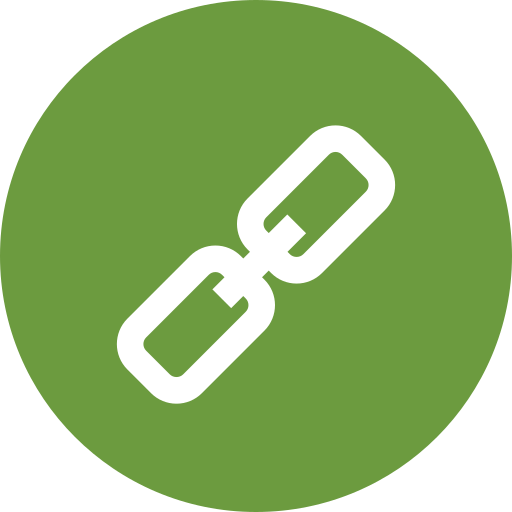| Product name | Per Pill | Savings | Per Pack | Order |
|---|---|---|---|---|
| 60 pills | $0.55 | $33.12 | ADD TO CART | |
| 90 pills | $0.47 | $6.96 | $49.68 $42.72 | ADD TO CART |
| 120 pills | $0.44 | $13.91 | $66.24 $52.33 | ADD TO CART |
| 180 pills | $0.40 | $27.82 | $99.36 $71.54 | ADD TO CART |
| 270 pills | $0.37 | $48.69 | $149.04 $100.35 | ADD TO CART |
| 360 pills | $0.36 | $69.55 | $198.72 $129.17 | ADD TO CART |
| Product name | Per Pill | Savings | Per Pack | Order |
|---|---|---|---|---|
| 90 pills | $0.40 | $35.57 | ADD TO CART | |
| 120 pills | $0.35 | $5.53 | $47.42 $41.89 | ADD TO CART |
| 180 pills | $0.30 | $16.60 | $71.14 $54.54 | ADD TO CART |
| 270 pills | $0.27 | $33.20 | $106.71 $73.51 | ADD TO CART |
| 360 pills | $0.26 | $49.80 | $142.28 $92.48 | ADD TO CART |
Ponstel, a nonsteroidal anti-inflammatory drug (NSAID), is widely used to treat mild to moderate pain, including menstrual cramps, headaches, and other types of pain. The medication is available in two strengths: 250 mg and 500 mg. In this article, we will delve into the details of Ponstel, including its uses, benefits, and how to order Ponstel or buy Ponstel online.
What is Ponstel?
Ponstel, also known as mefenamic acid, is a prescription medication that belongs to the class of NSAIDs. It works by reducing the production of prostaglandins, which are chemicals in the body that cause pain and inflammation. Ponstel is available in capsule form and is usually taken orally.
Uses of Ponstel
Ponstel is used to treat a variety of conditions, including:
- Menstrual cramps
- Headaches
- Toothaches
- Back pain
- Arthritis
- Other types of pain
Benefits of Ponstel
The benefits of Ponstel include:
- Effective pain relief
- Reduced inflammation
- Easy to take
- Available in two strengths: 250 mg and 500 mg
How to Take Ponstel
To get the most out of Ponstel, it is essential to take it as directed by your doctor. The usual dosage is 250 mg to 500 mg every 6 hours as needed. You can purchase Ponstel 250 mg mastercard or buy 500 mg Ponstel online from a reputable pharmacy.
Table: Ponstel Dosage and Strengths
| Strength | Dosage | Frequency |
|---|---|---|
| 250 mg | 1 capsule | Every 6 hours as needed |
| 500 mg | 1 capsule | Every 6 hours as needed |
Where to Buy Ponstel
You can buy Ponstel online from a variety of pharmacies, including:
- Online pharmacies
- Retail pharmacies
- Mail-order pharmacies
When ordering Ponstel online, make sure to choose a reputable pharmacy that offers generic 250 mg Ponstel fast delivery or cheap Ponstel express.
Tips for Taking Ponstel
Here are some tips to keep in mind when taking Ponstel:
- Take Ponstel with food to reduce stomach upset
- Do not take more than the recommended dose
- Do not take Ponstel for more than 7 days without consulting your doctor
- Tell your doctor if you have any allergies or medical conditions
List: Potential Side Effects of Ponstel
Here are some potential side effects of Ponstel:
- Stomach upset
- Diarrhea
- Dizziness
- Headache
- Nausea
- Vomiting
How to Get the Best Deal on Ponstel
To get the best deal on Ponstel, consider the following:
- Purchase Ponstel with Amex or other credit cards to get discounts
- Look for discount Ponstel 250 mg fast delivery or cheap Ponstel 500 mg buy on line
- Compare prices at different pharmacies to find the best deal
- Consider buying generic Ponstel 250 mg line or generic Ponstel 500 mg on-line
Table: Comparison of Ponstel Prices
| Pharmacy | Price (250 mg) | Price (500 mg) |
|---|---|---|
| Online Pharmacy | $10.99 | $19.99 |
| Retail Pharmacy | $14.99 | $24.99 |
| Mail-order Pharmacy | $12.99 | $22.99 |
Conclusion
Ponstel 500 mg and 250 mg are effective medications for treating mild to moderate pain. By ordering Ponstel or buying Ponstel online, you can get the pain relief you need at an affordable price. Remember to follow the dosage instructions and take Ponstel as directed by your doctor. With its benefits and ease of use, Ponstel is a great option for those looking for a reliable pain reliever.
Order Ponstel today and start feeling better tomorrow!
Pain is an unpleasant and often debilitating sensation that can affect anyone, regardless of age, sex, or background. It can be acute, lasting for a short period, or chronic, persisting for months or even years. Treating pain effectively is crucial to improving the quality of life, reducing suffering, and preventing long-term damage. In this article, we will delve into the world of pain management, exploring the different types of pain, their causes, and the various treatment options available.
Types of Pain
Pain can be broadly classified into two categories: acute and chronic.
| Type of Pain | Description | Examples |
|---|---|---|
| Acute Pain | Short-term pain, usually lasting less than 3 months | Post-surgical pain, injury, infection |
| Chronic Pain | Long-term pain, lasting more than 3 months | Arthritis, fibromyalgia, neuropathic pain |
Acute pain is often a response to tissue damage, such as a cut or a broken bone. It is usually sharp and intense, but resolves once the underlying cause is treated. Chronic pain, on the other hand, is a complex condition that can be caused by a variety of factors, including nerve damage, inflammation, or changes in the brain's pain processing centers.
Causes of Pain
Pain can be caused by a wide range of factors, including:
- Injury or trauma: Accidents, falls, or sports injuries can cause acute pain.
- Infection: Bacterial, viral, or fungal infections can lead to pain and inflammation.
- Inflammation: Conditions such as arthritis, tendinitis, or bursitis can cause chronic pain.
- Nerve damage: Conditions such as neuropathy, sciatica, or shingles can cause chronic pain.
- Cancer: Tumors can cause pain by pressing on surrounding tissues or nerves.
- Genetic disorders: Conditions such as sickle cell disease or cystic fibrosis can cause chronic pain.
Treatment Options for Pain
Fortunately, there are many effective treatment options available for managing pain. These can be broadly classified into:
- Pharmacological interventions: Medications such as analgesics, anti-inflammatory drugs, and opioids can be used to manage pain.
- Non-pharmacological interventions: Techniques such as physical therapy, acupuncture, and cognitive-behavioral therapy can be used to manage pain.
- Alternative therapies: Modalities such as massage, yoga, and meditation can be used to manage pain.
Some of the most common treatment options for pain include:
- Over-the-counter pain relievers: Medications such as acetaminophen or ibuprofen can be used to manage mild to moderate pain.
- Prescription pain medications: Medications such as opioids or muscle relaxants can be used to manage severe pain.
- Physical therapy: Techniques such as exercise, stretching, and massage can be used to manage pain and improve function.
- Acupuncture: The insertion of fine needles into specific points on the body can be used to manage pain.
- Cognitive-behavioral therapy: A type of talk therapy that can help individuals manage pain and improve coping skills.
Benefits of Effective Pain Management
Effective pain management can have a significant impact on an individual's quality of life. Some of the benefits of effective pain management include:
- Improved function: Reduced pain can improve mobility, strength, and overall function.
- Enhanced mood: Reduced pain can improve mood, reducing anxiety, depression, and stress.
- Better sleep: Reduced pain can improve sleep quality, reducing fatigue and improving overall well-being.
- Increased productivity: Reduced pain can improve productivity, allowing individuals to return to work, school, or other activities.
- Improved relationships: Reduced pain can improve relationships, reducing irritability, anxiety, and stress.
Challenges in Pain Management
Despite the many treatment options available, pain management can be challenging. Some of the challenges in pain management include:
- Complexity of pain: Pain is a complex and multifaceted condition, making it difficult to diagnose and treat.
- Individual variability: Individuals respond differently to different treatments, making it challenging to find the right treatment.
- Side effects: Many pain medications can have significant side effects, such as addiction, constipation, or drowsiness.
- Access to care: Many individuals may not have access to effective pain management, due to lack of insurance, transportation, or healthcare providers.
Future Directions in Pain Management
The field of pain management is rapidly evolving, with new treatments and technologies being developed. Some of the future directions in pain management include:
- Personalized medicine: The use of genetic testing and other biomarkers to tailor treatment to an individual's specific needs.
- Non-invasive brain stimulation: The use of techniques such as transcranial magnetic stimulation (TMS) or transcranial direct current stimulation (tDCS) to manage pain.
- Stem cell therapy: The use of stem cells to repair damaged tissues and manage pain.
- Virtual reality: The use of virtual reality to manage pain and improve coping skills.
In conclusion, treating pain is a complex and multifaceted challenge that requires a comprehensive approach. By understanding the different types of pain, their causes, and the various treatment options available, individuals can take the first step towards managing their pain and improving their quality of life. As the field of pain management continues to evolve, it is likely that new and innovative treatments will become available, offering hope to individuals suffering from chronic and acute pain.
Key Takeaways
- Pain is a complex and multifaceted condition that can be acute or chronic.
- Effective pain management can improve function, mood, sleep, productivity, and relationships.
- There are many treatment options available, including pharmacological, non-pharmacological, and alternative therapies.
- Challenges in pain management include complexity, individual variability, side effects, and access to care.
- Future directions in pain management include personalized medicine, non-invasive brain stimulation, stem cell therapy, and virtual reality.
Resources
For individuals seeking more information on pain management, the following resources may be helpful:
- American Pain Society: A professional organization dedicated to advancing the field of pain management.
- National Institutes of Health: A government agency that provides information on pain management and conducts research on pain.
- Pain Foundation: A non-profit organization that provides education, support, and advocacy for individuals with chronic pain.
- American Academy of Pain Medicine: A professional organization dedicated to advancing the field of pain medicine.
























